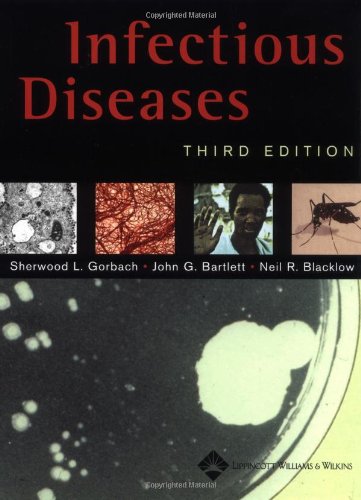

Most ebook files are in PDF format, so you can easily read them using various software such as Foxit Reader or directly on the Google Chrome browser.
Some ebook files are released by publishers in other formats such as .awz, .mobi, .epub, .fb2, etc. You may need to install specific software to read these formats on mobile/PC, such as Calibre.
Please read the tutorial at this link: https://ebookbell.com/faq
We offer FREE conversion to the popular formats you request; however, this may take some time. Therefore, right after payment, please email us, and we will try to provide the service as quickly as possible.
For some exceptional file formats or broken links (if any), please refrain from opening any disputes. Instead, email us first, and we will try to assist within a maximum of 6 hours.
EbookBell Team

4.3
98 reviewsThe Third Edition of this definitive reference provides comprehensive guidelines on the diagnosis, treatment, and prevention of every infectious disease seen in current clinical practice. More than 300 world-class practitioners detail the full range of clinical infections, microbial agents, viruses, mycobacteria, fungi, and parasites and describe all contemporary diagnostic tests, antimicrobial therapies, and prophylactic measures. Coverage includes chapters on surgical infections written by preeminent surgeons and up-to-the-minute information on HIV infection. A comprehensive antimicrobial drugs section includes tables that provide complete, at-a-glance information on mechanisms of action, side effects, indications, and dosages.
New Third Edition chapters cover bioterrorism, hospital infections, emerging infections, Kawasaki syndrome, transmissible spongiform encephalopathies, diabetic foot ulcers, decubitus ulcers, staphylococcal and streptococcal toxic shock syndrome, food safety, linezolid and quinupristin/dalfopristin, molecular diagnostics, diagnostic significance of nonspecific laboratory abnormalities, and clinical approaches to patients with recurring infections. This edition provides complete coverage of newer viruses such as human herpesvirus 6 and 8, West Nile virus, hepatitis C, D, and E, hantaviruses, caliciviruses, and astroviruses, as well as recently discovered microorganisms such as Escherichia coli 0157, Helicobacter pylori, Chlamydia pneumoniae, Bartonella, and microsporidia.